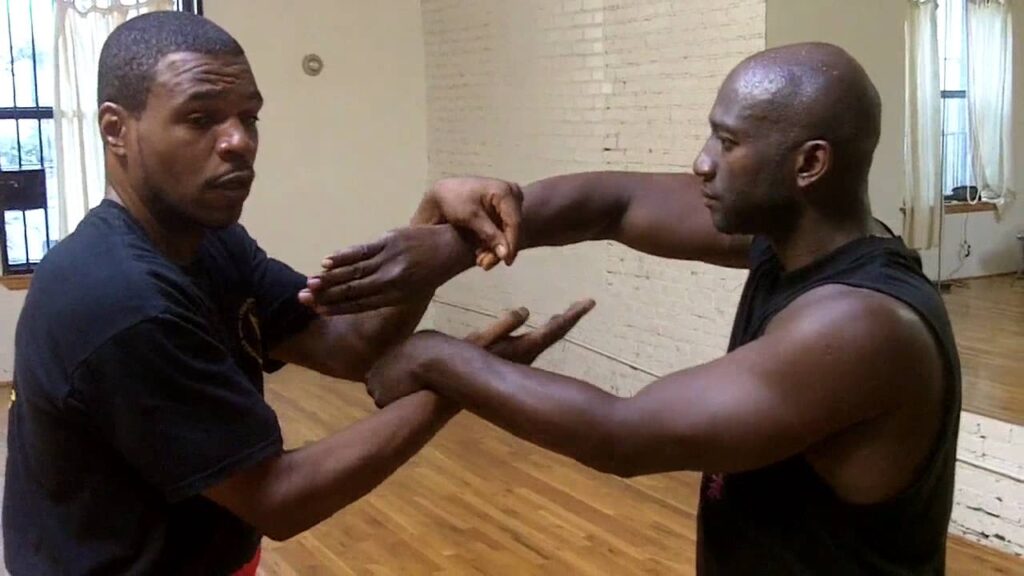It’s very much like the Buddha Hand from Wing Chun Kung Fu, and the Half Fist of some styles of Ninjutsu. The Tai Chi “single whip” hooked hand structure is something of a mystery to most martial arts “experts”.

For many a triggerhappy Tai Ji Quan practitioner, the hooked hand seems unexplainably impractical; just as most hard style martial artists see softstyle in general as obscure, ambiguous and impractical. The truth is though, that nothing could be further from the truth. The hooked fist, with fingers grouped at the tip, is the most superior fist structure for those who understand.
Benefits of clipping an opponent with the knuckles of a tidily half-clenched salt-pinching fist include:
- Minimisation of reactive force, due to centrifugal momentum and smoothness of contact.
- Precision due to the ease of varying point and force of impact when skimming the target as opposed to bluntly impaling it.
- Minimisation of excessive inflicted damage without necessarily compromising the ability to deliver an easy K.O. in case required.
- Maximisation of speed of handmovement and wholebody movement in general thanks to minimisation of tension in the fist, arm and body in general.
- If you’ve got long fingernails, you won’t stab yourself in the palm while punching with a clenched fist.
- It’s quicker and easier to followup the punch with the most appropriate next move or to change into the most appropriate technique midway through punching if required.
Disadvantages include:
- The immediate impact of the initial punch may need to be slightly lighter. This is no problem if your technical competence favours speed and smarts over brute force and ignorance.


There’s no competition really. It’s found in Tai Chi and other arts, like Ninjutsu, for a reason – when you’ve genuinely mastered the art of emptyhanded combat with finesse, you’ll understand and use it yourself before a standard punch. I don’t even need to mention the flow of chi because the superficial practicality of the technique is sufficient to justify its excellence.
Caution: don’t punch with a bent wrist!
Be careful not to punch with a bent wrist! The wrist must be fully straight at point of impact – the only lasting bend is in the hand – the loose fist structure. At point of impact, there is a straight line from your elbow, right the way through to your first set of knuckles. The second set of knuckles are quite clenched at the pinky finger while quite straight at the first index finger, and bent to varying degrees on other fingers so as to make a smooth hand structure that looks like you’re sifting a pinch of salt.